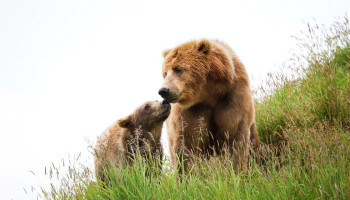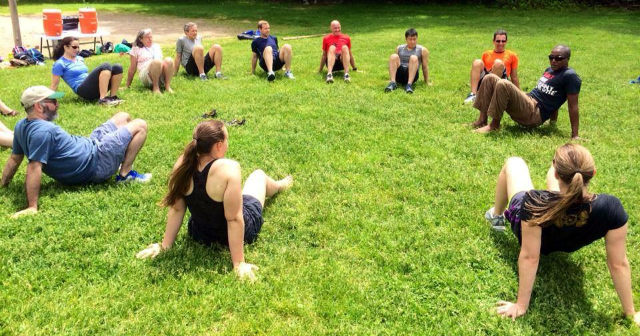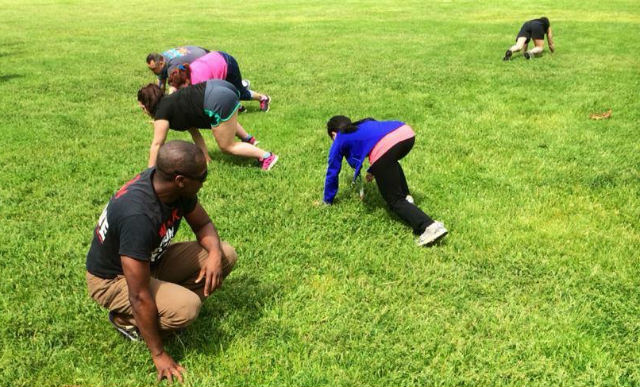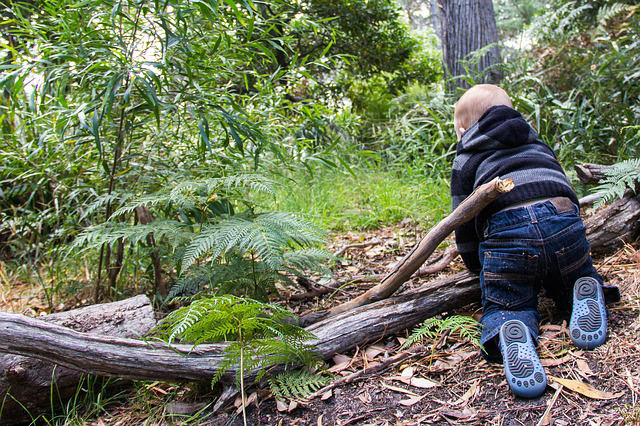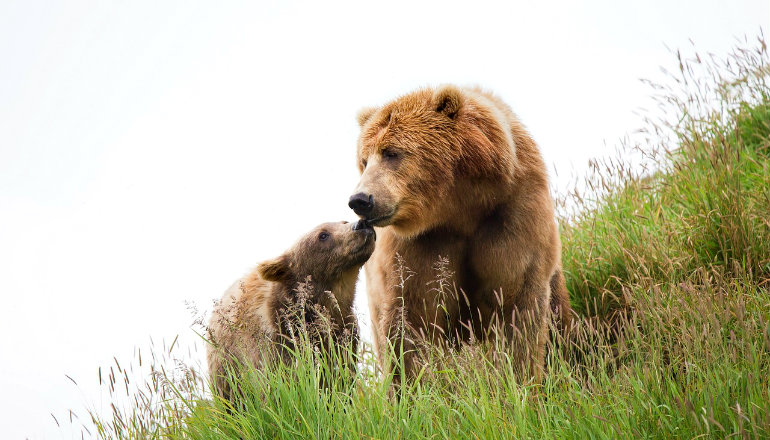 Reading Time: 5 minutes
Reading Time: 5 minutesThe idea of using animal-like or animal-inspired exercises for training is nothing new. Several athletic disciplines — such as gymnastics and martial arts like Shaolin kung fu — use animal-inspired exercises to create movements of incredible strength and gracefulness. And, if you visit any playground, you’ll see kids crouching, crawling, and moving just like animals.
But what is new is the integration of these animal moves into comprehensive fitness programs for the average person to help them achieve results that were never before possible.
Animal-Inspired Exercise Is Functional Exercise
If you tell your friends you’ve just spent an hour walking like a crab, crawling like a bear, hopping like a bunny, and slithering like an alligator, they might give you a puzzled look. But these movements can create some amazingly functional and capable physiques.
What animal-inspired fitness programs have in common is that they focus on primal, instinctive movements usually involving the entire body rather than a particular muscle, they rely on a person’s body weight for resistance, and are based around the concept of functional and practical movement.
The growing popularity of training like an animal is based on the human’s unique ability to replicate most movements from other parts of the animal kingdom.
Animal Movements Are Natural and Graceful
If you’ve ever observed an animal in the wild — or perhaps just at the local zoo where they have some access to a natural environment — the first thing that might impress you is how fluid, graceful, and natural all the movements appear to be. Whether they are swinging from branch to branch or prowling about in front of their young ones, everything animals do seems to be smooth and graceful.
The fundamental principle of any animal-inspired fitness program is that movements are fluid, graceful and dynamic. And all these movements mimic those you’d find in nature. That’s why many of the movements are directly named after bears, gorillas, rabbits, or cats. You are emulating moves that have been honed by millions of years of evolution and natural selection.
Movement Generalization Not Specialization
If you think about the stereotypical exercises performed in the gym, such as the bicep curl, most of them isolate one or two muscles at a time. Only a few exercises, such as the squat, actually involve the full body working as a unit.
That’s something that training like an animal tries to overcome. One way to optimize strength, flexibility, and mind and body control is by involving the spine and trunk — what many refer to as “engaging your core.” We do this with locomotion, especially with cross-pattern or quadrupedal movements.
Instead of a specialized movement for just one muscle, the idea is to develop generalized movements for multiple muscles and joints at one time. These are known as compound movements.
A classic example is the “bear crawl,” which is crawling on the ground, without using the knees. This involves the arm and leg muscles, as well as the engagement of the hips, back, shoulders, and trunk. The very act of locomotion forces you to focus on orientation, flexibility, coordination, and fluidity. Thus, almost every animal-inspired exercise program will involve some variant of the bear crawl, as well as other quadrupedal or ground-based movements.
How to Train with Animal-Inspired Exercise
To do these exercises, you don’t need free weights, barbells, or weight stacks. All you need is your body weight. You’ve never seen a tiger or lion working out with weights in the jungle (bench pressing tree trunks?), so why would humans need weights to get beast-like strength?
Humans are unique in our varied ability to climb, run, jump, lift and carry. These exercises promote stability and orientation without creating the type of bulky muscle that might get in the way of mobility, grace and control.
In modern Western society, however, not all these movements are put to good use. Most of us lead rather sedentary lives, where the ability to sit in a chair for hours at a time during the day and recline on a couch for hours a time during the night are what that we “train” most often.
Realizing this, the focus of many animal-inspired training routines is on “functional movement” — the type of action that can make you more efficient and productive in your everyday life. This might include exercises that make it easier to climb up and down a flight of stairs or practices that make it easier to carry groceries to and from the supermarket.
If you want to try training with animal-inspired exercises, you can click here to try out my free Animal Moves circuit which includes videos for bear crawl, crab walk, duck walk, kangaroo jump and flea jump.
For competitive athletes, animal-inspired exercise means a focus on core movements that are part of their discipline. Thus, for downhill skiers, it might mean routines centered around squatting and other lower-body movements that are perfect for explosive power, as well as the balance and precision required for navigating steep turns on a mountain slope.
Our Roots as Hunter-Gatherers
As humans evolved into an upright, bipedal species, we gradually lost touch with our natural roots. Our history as hunter-gatherers bears little resemblance to modern technological society, where everyday survival has nothing to do with foraging long distances for food or escaping wild animals. This means we’ve lost touch with nature. Four-legged locomotion is something that rarely occurs to most of us, even though that’s exactly how our babies learn to crawl.
While humans can jump long distances, we cannot possibly compare to the kangaroo. While people can excel at climbing, we have nothing on the chimpanzee. And while humans can crawl, slither, or run, we cannot compare with the unique movements of a bear, alligator, or horse.
But training like an animal is one way to capture some of the strength, dynamism, and grace that can be found in the animal kingdom. The only way to get back to our real nature is by doing exercises that emulate what animals do in their natural habitats.
If you’re looking for a competitive edge, it’s time to go full beast mode and become the king of the jungle. In other words, train like an animal, but move like a human.
